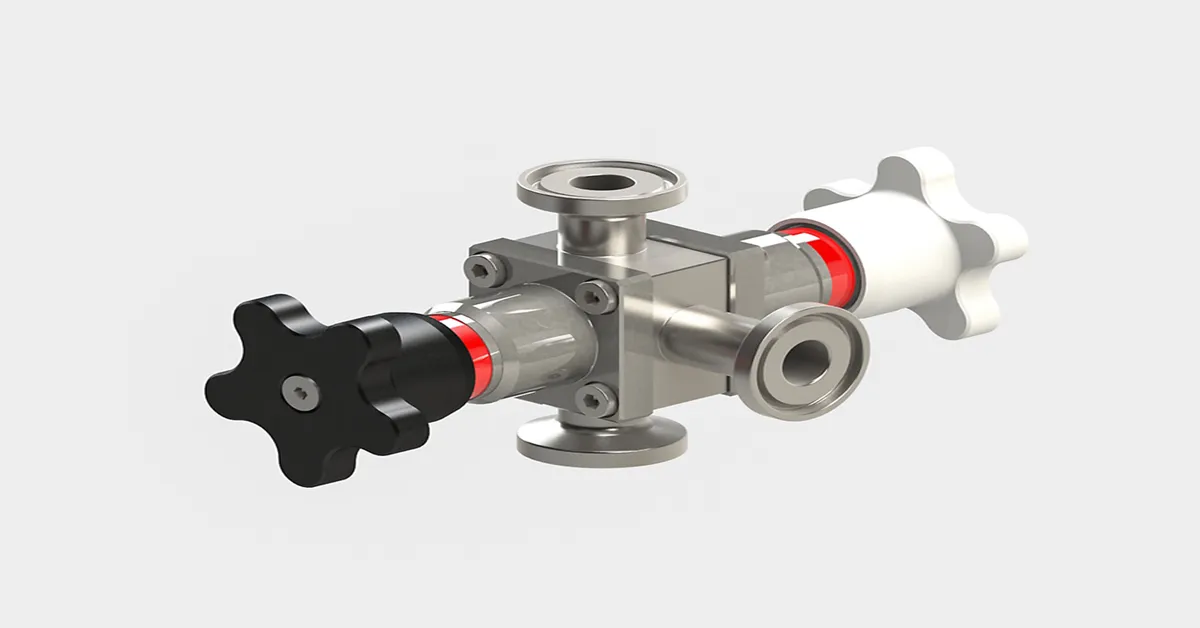A 3-way valve is a multi-functional product which plays a major role in most of the industrial applications related to the flow systems and is responsible for the operation of the flow between a total of three ports. They are used in various industries and can help manage a large number of complicated piping arrangements which is very important in the management of fluids. Within the general information about 3-way valves, this guide focuses on the types, applications of 3-way valves, and the critical factors to consider on the selection process particularly for business to business markets. Written with the purpose of assisting businesses in their decision making, this article is less focused on marketing and more on technical content.
What Is a 3-Way Valve
A 3 way control valve is a kind of valve that is used to control the flow of fluids across three different paths. While two way valves may only open or close one path, 3 way valves are able to meld, redirect or separate flow or multiples of a channel. Because these types of valves can open and close in response to changing conditions, they are very valuable for use in industrial systems where flow rate must be variable. Used most often in HVAC systems, water treatment plants, and chemical processing, 3-way valves are a critical component in the management of system control along with pipeline simplification.
Types of 3-Way Valves
Basically, there are many types of 3-way valves, and all of them work in various manners hence being suitable for various industrial applications. Here are the most common types:
– Mixing 3-Way Valve: This type enables ;uid from two inlet ports to mix at the outlet, and is good for mixing two different fluids or controlling temperatures on an HVAC system.
– Diverting 3-Way Valve: Intended to allow fluid flow from one inlet to two outlets, diverting valves are employed in water treatment and chemical processing industries for the regulation of the flow of a certain fluid between various channels.
– L-Port 3-Way Valve: This valve is called the L-pattern valve due to its flow path configuration; it directs the flow from one port to one of two other ports. It is especially useful where passing to several pipelines is wanted but in variable degree.
– T-Port 3-Way Valve: As a T-port it is possible to connect all three ports to each other at the same time or to interchange the flow between every pair of connected ports. This type is flexible and it may function to mix percentages or to divide according to the system necessities in one cycle.
– 3-Way Ball Valve: Fast acting and very reliable, ball valves can be turned to stop or reverse the flow of a fluid. They are especially applied when the application requires high-performance and minimal service, such as acute industrial processes like in the oil and gas and chemical sector.
Key Considerations for Selecting a 3-Way Valve
Different aspects should therefore, be taken into consideration while selecting the appropriate 3-way valve. Here are key considerations to help B2B buyers make optimal selections:
– Flow Pattern Requirement: Determine whether the particular application requires a mixing or a diverting valve. It was established that mixing valves are most appropriate for combining two fluids than diverting valves that are more appropriate for rerouting flow to other pathways.
– Material Compatibility: The choice of material for a valve depends on the compatibility with the media passing through it. Even more, for the media that is abrasive, then stainless steel or brass is normally preferred; for the less abrasive ones, there is normally the preference for PVC.
– Pressure and Temperature Ratings: They should also look at the operating pressure and the temperature that the vessel will be operating within. Some applications can endure high temperatures or pressure and need special constructions like stainless steel or special seals.
– Control Precision: Find out whether your application demands tight flow control. For applications requiring precise valve control, use the type that can position or the ones that can easily connect with other control systems.
– Connection Type: As for other connection types, they can be threaded connection, flanged connection or welded connection. Select a connection type that is compatible with the existing pipeline in order to have an easier connection process and to reduce instances of leakage.
For further details on 3-way valve options, you can explore available products on Dombor’s site: https://www.dombor.com/de/product-category/ball-valves/
Uses of the 3-Way Valves
Because of their flexibility, three-way valves are used in every aspect of the industrial processes. Here are some common applications:
– HVAC Systems: The three-Way Valves play an important aspect of HVAC since it is used to mix hot and cold water or control the circulation between the various temperature ranges and the heating or cooling zones.
– Water Treatment: 3 port valves are used in water treatment stations to enable the operator to switch the water for different processes, or to mix raw water from various sources to provide the best quality water.
– Oil and Gas: In the oil refineries as well as in the gas processing industries 3 way valves are utilized to regulate the flow of the fluid as well as the gasses between several units to increase the safety of the processes as well as the flexibility.
– Chemical Processing: In chemical manufacturing, 3-way valves are used to mix chemicals, route flow to several reactors, or control effluents, including the flow control of hazardous chemicals.
– Industrial Cooling: In cooling applications, a 3-way control valve helps to control the flow of coolant to the required equipment that needs to be cooled like in the metalworking and the heavy industries.
Maintenance and Troubleshooting for 3-Way Valves
Normal check and maintenance should be conducted to make sure that 3-way valves serve the needed function and last long. Here are some maintenance and troubleshooting tips:
– Regular Cleaning: Often, clean all the valves to eliminate any dirt or deposit, especially in systems with viscous or fluid containing particulate matter.
– Leak Testing: Carry out a leakage test on a frequent basis for ascertaining that all the borders are sound. Seepage can also suggest that some of the territory’s seats or seals have worn out and hence they must be changed just before the system starts to perform less effectively.
– Lubrication: Ball valves are within this category; it is advisable to lubricate these valves to prevent sticking of the balls to the seat. The lubrication frequency should also be done as recommended by the manufacturer.
– Inspect Seals and Seats: Seals and seats may also deteriorate after some time due to chemical attack or because of high temperature. These parts should be checked often and when they begin to leak or have hiccups, then changed.
– Positioning Calibration: For automated systems, every now and then pamper the valve’s positioning mechanism to select the right position to direct and regulate the flows appropriately especially if the valve is utilized to mix or divert particular streams.
Concisely, 3 way control valves are useful tools in industry for a broad variety of applications where repeatability and flexibility are important. Due to the varieties of 3-way valves, the evaluation of the required application and proper maintenance plan of the 3-way valves, B2B customers can guarantee its sustainable functional and durability. Almost all applications in HVAC systems, process and water treatment involve the use of 3-way valves and it’s important to choose the optimum valve so as to avoid complications in the process of handling fluids.







